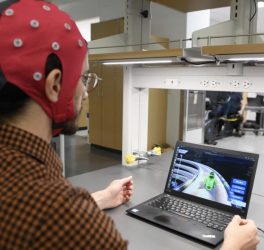
James Grice, a second-year University of Kent (Britain) has launched a new iPhone app designed to help make rail travel more accessible for travelers who are blind or have low vision by alerting them when their train is nearing a station stop, ensuring that they don’t miss their stop.
The app, called Stay on Route, lets users pre-program the app with their destination station and set an alert, such as an alarm or a vibration, for when the station is a set distance away, for example one mile. While the app is aimed at improving accessibility it could also be used by all types of travelers worried they may miss their stop if reading, resting or otherwise distracted.
“Stay on Route has huge potential to make train travel easier and more relaxing for travelers who are blind or have low vision, as well as anyone else who may be worried about missing their stop. It has been great to have had the support of the KBS ASPIRE team at the University to bring the app to market and hopefully with feedback from users it will continue to develop into a must-have travel app.’ said James Grice.








